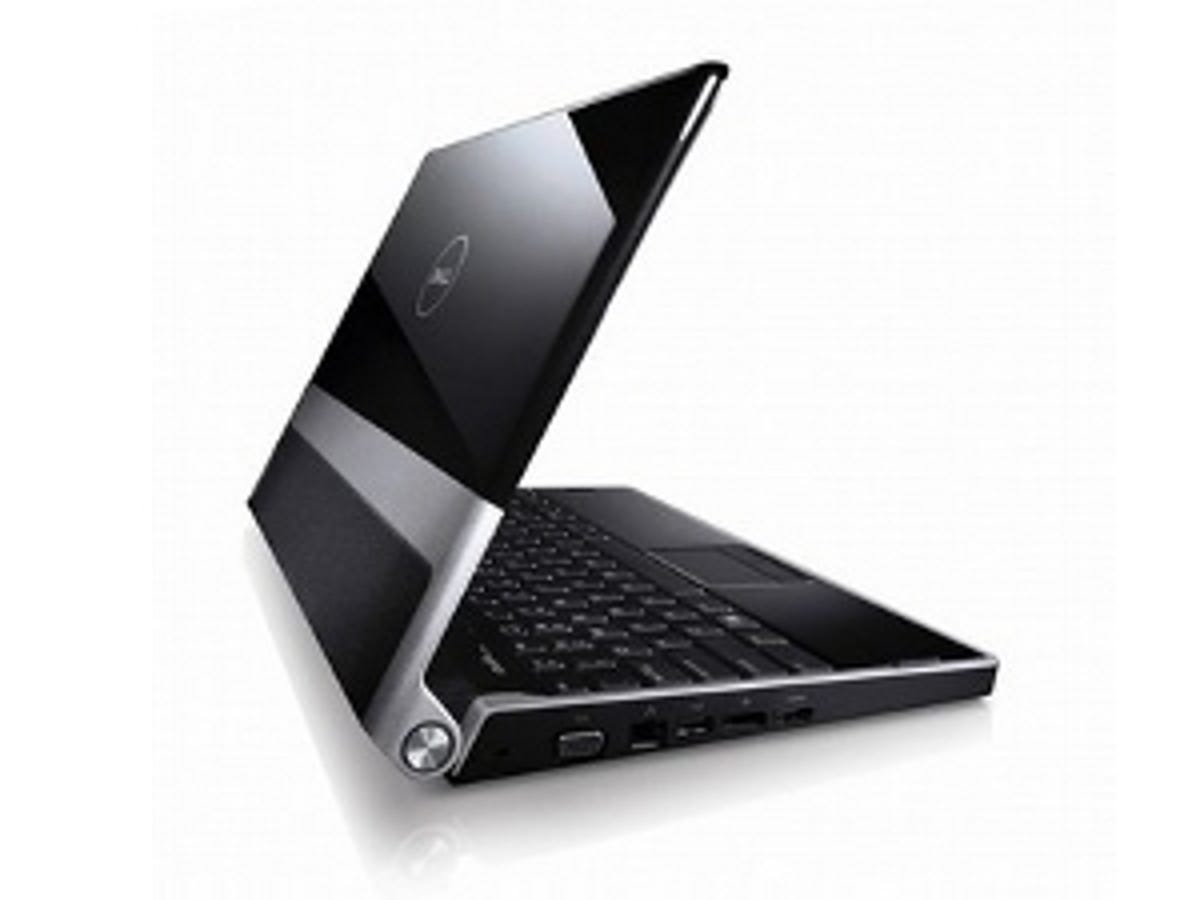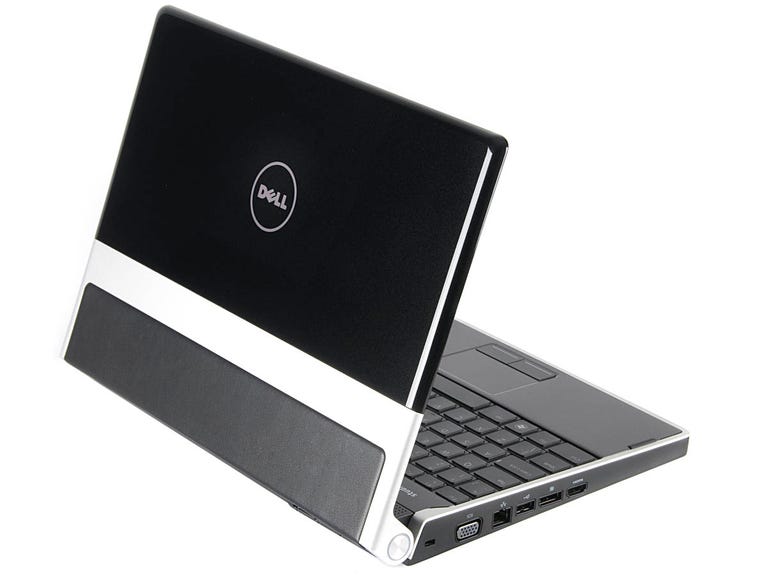 Why You Can Trust CNET
Why You Can Trust CNET Dell Studio XPS 13 review: Dell Studio XPS 13
The Studio XPS 13 an attractive laptop with very impressive raw performance, not to mention relatively strong build quality and good wireless capabilities. Although certain aspects of the laptop's design prevent it from attaining overall excellence, it remains a very good machine
In the beginning, Dell created the high-end XPS range, and saw that it was good. Years later, it created the Studio range -- a slightly trendier alternative to its long-running Inspiron series. Dell then went and baffled the backside off everyone by launching the Studio XPS line, an alternative to the Studio and XPS ranges. Confused? We certainly are.
The Good
The Bad
The Bottom Line
The Studio XPS 13 is available now for a starting price of £799. The model reviewed here, product code N02X1301, retails for £1,511.
Design
The Studio XPS 13 is the smaller, 13.3-inch sibling of the Studio XPS 16. Like its big brother, it's a fairly attractive unit, but we're not convinced it's as stylish as the XPS M1330, Dell's other 13.3-inch XPS laptop, which we reviewed last year. We think Dell has tried too hard during the design process, using nearly every trick in the book of good laptop design -- all at once.
The lid in particular is a busy, contrived mass of leather, brushed aluminium and plastic. These are all fine in isolation but together they're just a mess. It's almost akin to a car maker taking random body panels from Ferraris, Bentleys and Audis, welding them together and expecting perfection.
Dell has placed one of the primary exhaust vents at the back edge of the laptop, which, in our opinion, isn't a good idea. It gets partially obscured when the screen is open at a 90° angle, and is blocked almost completely when the screen is tilted back further. This, unsurprisingly, causes the laptop to get hot.
There are plenty of really good things about the Studio XPS 13's design. The screen, for example, doesn't have a bulky, protruding bezel surrounding it -- it's entirely finished in edge-to-edge 'glass' (it's actually plastic), like you get on a MacBook.
We also really appreciate the fact that the keyboard and mouse selector buttons are backlit, which makes using this laptop in dimly lit rooms a doddle. Then there's the solid underside of the laptop, which has hollow vents in attractive patterns. Even the stickers on the laptop's bottom are neatly aligned in the centre. Well done, Dell.

There are a good selection of input/output ports on the Studio XPS 13. It comes with D-Sub, HDMI and DisplayPort video outputs; mic and twin headphone sockets, for sharing with a friend; and two USB ports, one of which doubles as an eSATA port.
Features
The Studio XPS 13 is designed to be quicker and more efficient than the XPS M1330. It uses a range of 'performance optimised' P-series Core 2 Duo CPUs, instead of the T-series 'performance' chips used in the M1330. P-series CPUs have the advantage of a faster 1,066MHz front-side bus (versus 667MHz to 800MHz on the T series) and a lower thermal design power, meaning potentially longer battery life. Our N02X1301 sample uses the most potent core components available on the Studio XPS 13 -- a 2.5GHz Intel P9500 CPU with 6MB of L2 cache, alongside 4GB of 1,066MHz DDR3 RAM.
The Studio XPS 13's graphics solution is arguably the laptop's most interesting feature. Some models feature ATI graphics, but those with Nvidia graphics benefit from the option of Hybrid SLI technology -- first seen commercially on the Apple MacBook. In this arrangement, the laptop uses a discrete GeForce 9400 GPU, as well as a motherboard-integrated 9200MGS chip. The latter is used during everday computing to power mundane tasks like looking at pictures, while the former kicks in automatically when the user requires more oomph.
The Studio XPS 13 is available with two types of 13.3-inch, 1,280x800-pixel display. The cheapest of these is the cold cathode fluorescent lamp (CCFL) model seen on most laptops, but an extra £50 buys you a trendy white-LED-backlit screen. The upgrade is hardly essential, but it is thinner and delivers a picture with brightness that doesn't degrade over the lifespan of the laptop. Buy it if you can afford it, we say.
The Studio XPS 13 does well in the storage department. Dell provides the option of a 500GB, 7,200RPM drive, in addition to 320GB and 250GB drives. Like all the trendiest laptops, the Studio XPS 13 also gives you the choice of a 128GB solid-state hard drive. This offers considerable performance improvements in disk-intensive applications, at the expense of affordability and capacity. Our advice to the average user is not to bother, unless you've just won the lottery.
The Studio XPS 13 has 802.11b/g Wi-Fi as standard, while Bluetooth is an option, as is a mobile-broadband module. For an extra £98, Dell will let you install your own SIM card beneath the battery. This enables you to access the Internet in almost any location -- so long as you're in an area with 3G cellular coverage.
The Studio XPS 13 package is rounded off with an internal, slot-loading DVD rewriter, a 2-megapixel webcam, a 64-bit copy of Windows Vista Home Premium, Microsoft Works 9, a six-cell battery and 2GB of DataSafe online storage for a year.
Performance
The first thing we noticed about the Studio XPS 13's performance was the fact that it gets hot -- quickly. The metallic underside heats up rapidly, making it uncomfortable to use the device on your lap -- particularly against bare skin. This is almost unforgivable in a modern laptop and, considering the amount of talk we've heard in recent years about laptop heat damaging men's testicles and causing infertility, we'd advise our male readers to be wary.
The laptop's raw performance is certainly impressive. It achieved 4,801 in the PCMark05 test, which is an improvement on the 4,527 achieved by our test XPS M1330, which admittedly used a 2.2GHz Intel T7700 CPU. Graphics performance in the 3DMark06 test was even better, with the Studio XPS 13 scoring a commendable 3,556, indicating that it's far more suited to gaming than the XPS M1330, which clocked just 1,457.
We're still running battery tests on the Studio XPS 13, so check back shortly to see how it fared away from the mains.
Conclusion
The Dell Studio XPS 13 shoots for excellence but comes up short. It's almost as if it's trying too hard in some areas, when less really would have been more. Having said that, it's worth checking out for its very strong performance, relatively solid build quality and wireless capabilities.
Edited by Charles Kloet
